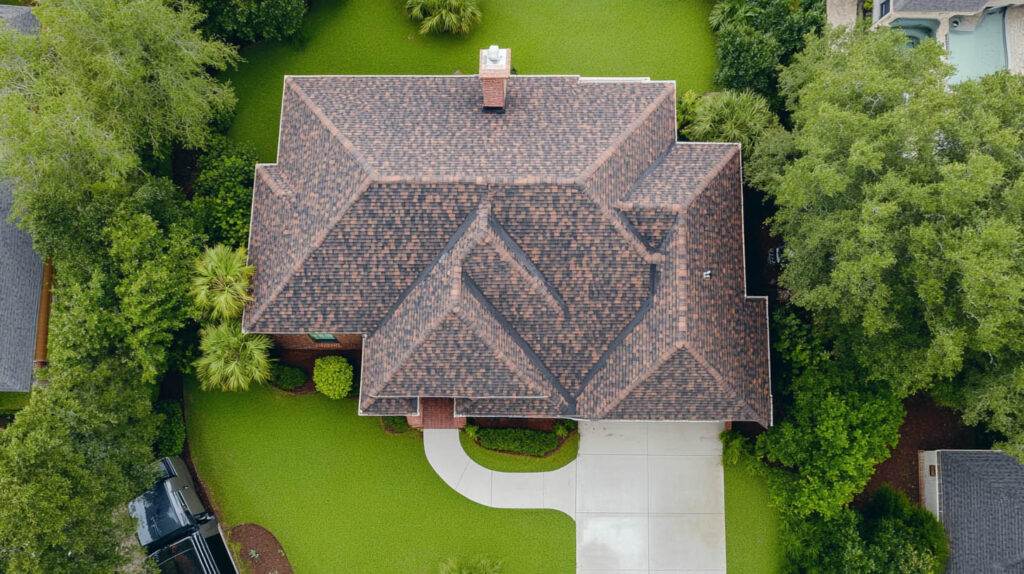
Blog
New Roof vs. Re-Roof: Understanding the Key Differences
When it comes to maintaining or upgrading your home’s roof, knowing whether to opt for a re-roof or a full replacement can help you make the best decision for your property. Each option offers unique benefits depending on factors such as roof condition, age, and budget. Avenue Roofing provides comprehensive assessments to help Jacksonville homeowners choose the ideal solution. Avenue Roofing ensures each project is managed with precision, helping homeowners make informed choices that protect and enhance their homes.

What Does a Re-Roof Involve?
Re-roofing involves adding a new layer of shingles over the existing layer, effectively refreshing the roof’s appearance and providing an additional protective barrier. This method is generally more affordable and quicker than a complete replacement, making it a popular choice for roofs with minor issues.
Pros of Re-Roofing
- Cost-Effective: Re-roofing is less labor-intensive, reducing overall costs.
- Faster Installation: Because it doesn’t require removing existing shingles, re-roofing is typically faster.
- Improves Appearance: Re-roofing gives the roof a refreshed look without the expense of a full replacement.
Cons of Re-Roofing
- Not Suitable for All Roofs: Roofs with structural issues, water damage, or multiple shingle layers are not candidates for re-roofing.
- May Mask Underlying Problems: Since existing shingles are not removed, any hidden damage to the roof deck may go unnoticed.
- Reduced Longevity: The new layer may not last as long as a full replacement, especially if there are underlying issues.
Did You Know? Building codes generally do not allow more than two layers of shingles on a roof. Homeowners with existing double layers will need to consider a full replacement for code compliance.
What Does a Roof Replacement Involve?
A roof replacement includes removing all existing shingles and repairing any underlying damage before installing new shingles. This process ensures that any existing structural issues are addressed, providing a fresh start for the roof and increasing its lifespan.
Pros of Roof Replacement
- Longer Lifespan: A completely replaced roof typically lasts longer than a re-roof, offering homeowners a better return on investment.
- Thorough Inspection and Repair: Removing the old shingles allows for a thorough assessment of the roof deck, ensuring any hidden issues are resolved.
- Enhanced Home Value: New roofs add value to a home and can increase curb appeal, making them attractive to future buyers.
Cons of Roof Replacement
- Higher Upfront Cost: Due to the added labor and materials, a roof replacement is generally more expensive than re-roofing.
- Longer Installation Time: Replacing a roof requires more time, often taking several days depending on weather conditions and roof size.
Which Option is Right for You?
Factors to Consider
- Roof Condition: If your roof has minor, localized issues, re-roofing may be sufficient. However, for older roofs or those with structural damage, a full replacement is recommended.
- Budget: Re-roofing offers a budget-friendly solution, while a replacement, though pricier, provides a longer-lasting investment.
- Future Plans: Homeowners planning to stay long-term may benefit from the durability of a roof replacement, while those planning to sell soon may prefer the cost-savings of re-roofing.
Conclusion: Making an Informed Choice
Choosing between a new roof and a re-roof is a decision that depends on various factors, including roof condition, budget, and long-term goals. Avenue Roofing’s expert team is available to provide thorough inspections and offer professional guidance on the best option for your home. By understanding the pros and cons of each approach, you can protect your investment and enjoy a safe, attractive roof for years to come.
To learn more about the best times to consider re-roofing versus replacement, check out our guide on How a New Roof Can Add Value to Your Home.
FAQs
Q1: What is the difference between re-roofing and roof replacement?
A1: Re-roofing adds a new shingle layer over the existing roof, while roof replacement involves removing old shingles and addressing any underlying issues.
Q2: When is re-roofing not recommended?
A2: Re-roofing is not recommended for roofs with structural issues, multiple shingle layers, or extensive water damage.
Q3: How long does a full roof replacement take?
A3: Roof replacement can take 3-4 days on average, depending on weather conditions and roof size.
Q4: Does re-roofing increase home value?
A4: Re-roofing improves curb appeal, but a full replacement generally adds more value due to its extended lifespan.
Q5: Can I re-roof over an existing metal roof?
A5: No, re-roofing is typically limited to shingle roofs. Metal roofs require a different approach.
To learn more about whether to repair or replace your shingle roof, click here.



